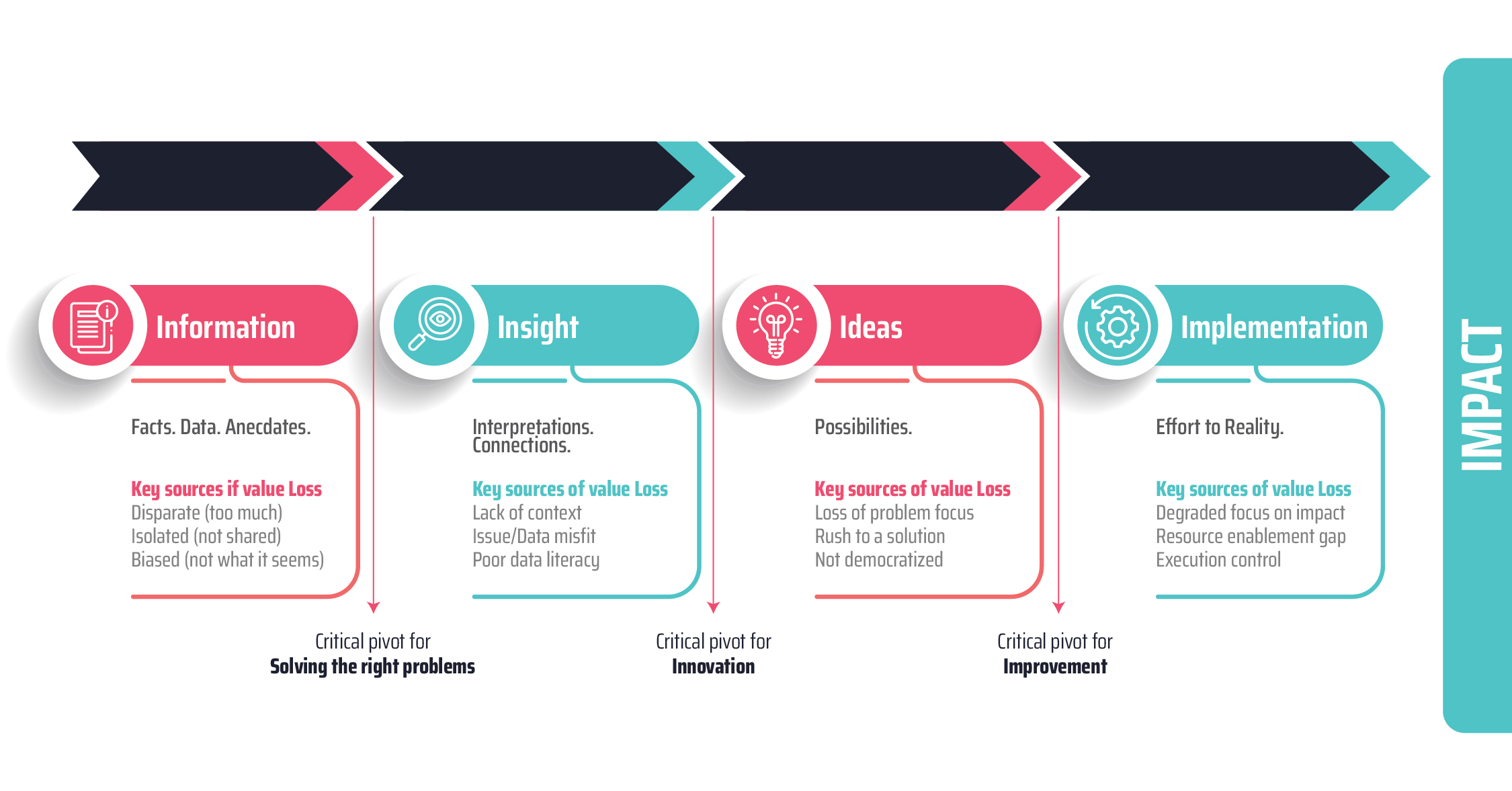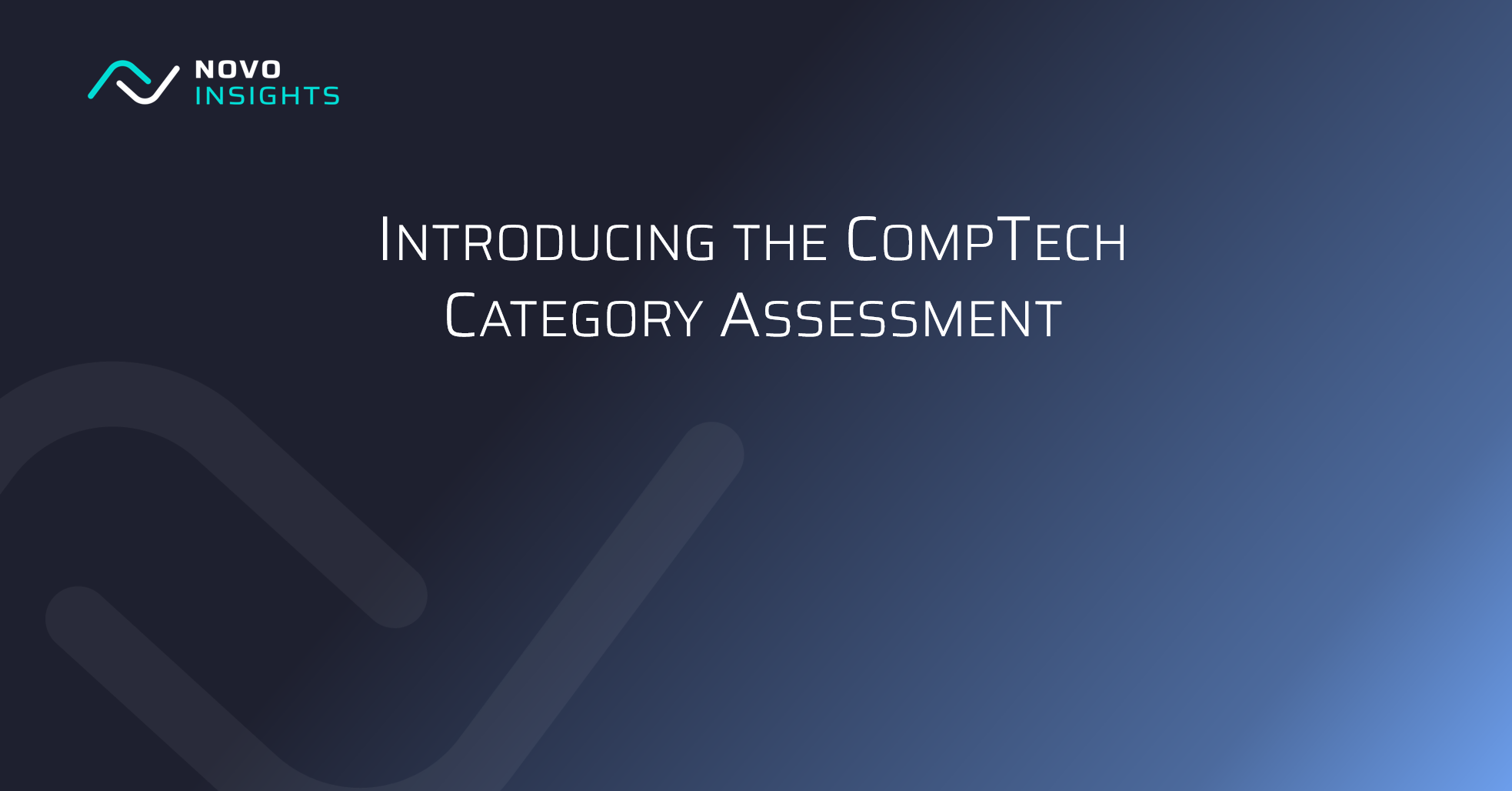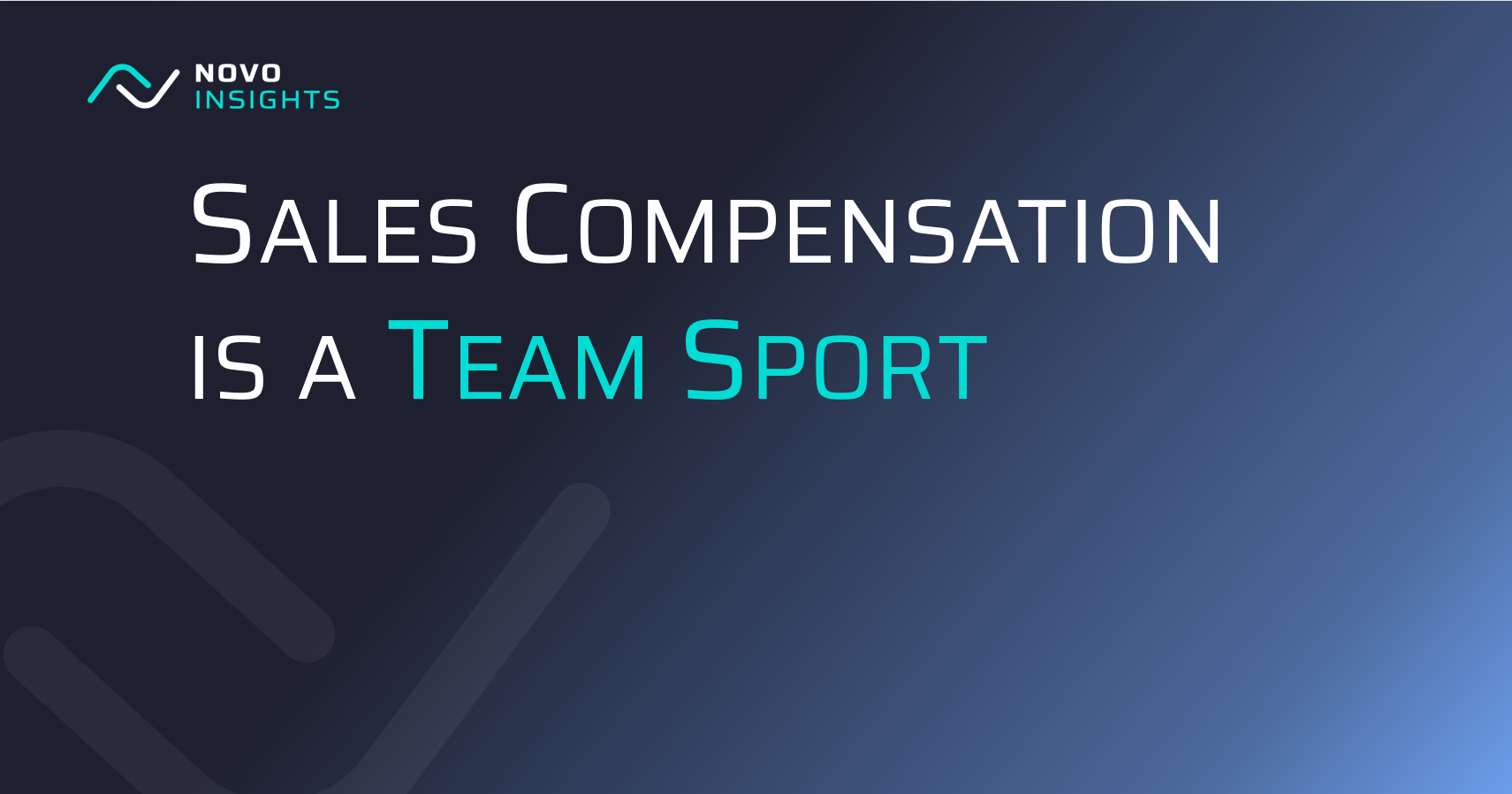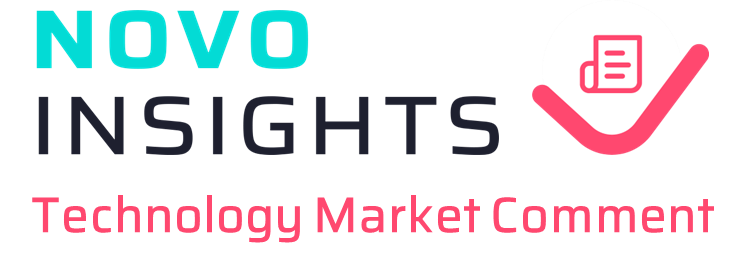Using data to make an impact in your organization doesn't usually require new teams, fancy algorithms, or expensive technologies. In many cases, organizations have most if not the ingredients in place to create meaningful impact through data - but a series of known challenges and simple gaps create a loss of value.
These gaps fall in the Information to Impact Process - the series of actions through which we turn data into value. Data in itself produces nothing. As machines and humans process that data, it can translate into meaningful innovations or improvements that create meaningful business impact. Below we explore the steps of this process and three key challenges that exist in each step, offering suggestions for overcoming these challenges to increase business impact.
1. Information
We are surrounded by information. As technology has evolved to track everything and it's virtually free to store data indefinitely, it's easier than ever to generate usable data. Within the HR space, we are also surrounded by anecdotal data and other points of feedback about the People experience. A challenge here is generally not the lack of data, although we may find that specific data gaps may exist.
How Information Value is Lost
At times, having lots of data becomes a challenges just the same. Just because we can measure something doesn't mean we should, and knowing what information points to truth versus what may be a false indicator becomes more of a challenge.
The three most common challenges with Information are:
| Challenge | What Is Needed |
|
Disparate: With too much data, it becomes a challenge to create relatioships between data points. It's also hard to know what data to use that can point to real insights. |
People teams need to identify an underlying data strategy that clarifies how data fits together to bring meaning to HR management |
|
Isolated: Data lives in every application used in the People experience, which creates two types of data isolation.
|
People teams need to create a capability to manage data across sources and govern its visibility. |
| Biased: In the HR speace we get a lot of feedback, which is generally a biased form of data. It represents those willing to give feedback, and in many cases represents the outlier (both positive and negative) views of a situation. Seemingly unbiased data, like employee surveys, can also reflect underlying biases of respondents. | People teams need to clearly understand the sample of data and challenge whether it likely represents the underlying population |
2. Insight
Insights are the "aha" moments coming from information. It is where connections between points of information are made, and data findings are interpreted to provide a "so what" to clarify a problem or opportunity. This used to be a fully-human experience, but advances in machine learning and AI have led to circumstances where insights can be fuled by automation. For most orgnizations and situations, though, insights are generated by experienced eyes looking at data in proven ways.
How Insight Value is Lost
As generating summaries of information has become simpler, the risk of misinterpretation has not gone away. In fact, as the availabilty of scientific-feeling data visualization/summarization has increased, there can be an increased risk of misinterpretation. This is generally due to three key challenges:
| Challenge | What Is Needed |
|
Lack of Context: Metrics and trends can often appear meaningful when out of context. There may be an external stimulus or other reason that a trend occurs which changes the way it should be interpreted. |
People teams need to ensure metrics are viewed through the lense of the circumstances that influence those metrics. |
|
Issue/Data Misfit: We can accientally apply a data set to the wrong problem. For example, seeing a trend in why job offers are being declined is likely not a clear indicator of how current employees view the organization. |
People teams need to have a clear process for testing business hypotheses with the right data |
| Poor Data Literacy: Not everyone is a data person. Skills to understand data and what it tells us are often inconsistent among People teams and the business customer. | Orgnizations need to invest in data literacy, not just within the dedicated People Analytics team but among the customers of People Analytics as well |
3. Ideas
Ideas are how we discover what's possible to change an observed trend. Even the most robust analytics and artificial intelligence are still immature at prescribing a course of action. In large part, this is because the possibilities are endless, and only limited by the bounds of human creativity. While there are certainly past practices that can be deployed again, or common solutions to common problems, fitting the idea to the context and situation is a uniquely creative process.
How Idea Value is Lost
| Challenge | What Is Needed |
|
Loss of Problem Focus: In the course of generating ideas, and particularly in collaborative settings like brainstorming, good ideas might arise that are tangential to the stated problem. Because these are good ideas, the can take the focus over ideas that solve the problem at hand. |
Problem solvers need a clear process for validating that proposed solutions have clear path to impact the originally observed problem statement. |
|
Rush to Solution: Speed is how many companies compete, and the desire to act fast can run counter to generating great ideas and ensuring they are refined to excellence. |
Organizations should balance the desire for fast/agile action with the patience to ensure diverse ideas are heard and debated. |
| Not Democratized: Ideas are often created "in a room" - and that room may not contain the right people. In many cases, the best ideas come from those closest to the problem, not those in positions being asked to solve the problem. | Organizations and functions should create open mechanisms for gathering ideas, making sure idea generation is specifically not a top-down exercise. |
4. Implementation
As ideas are chosen to address a problem, it's then time to make those ideas a reality. Teams are spun up for implement the new program or improvement, and often times project/program management is engaged to help move the solution to fruition.
No good idea makes an impact as an idea - it has to be put into action. Whether this is a small "just do it" action, or a larger enterprise transformation taking many months (or years), the action must occur to produce results.
How Implementation Value is Lost
Google "most projects fail" to get a sense for the variety of drivers of failure. Implementation is hard work, rarely fun, and filled with risk. If we can't successfully implement a solution, it will not have the desired impact. Even if implementation is "successful" we often find that we don't fully realize the benefits we sought to achieve.
Within the People space, among the more common reasons that full impact isn't realized:
| Challenge | What Is Needed |
|
Degraded Focus on Impact: As teams continue to work on a problem, the focus can often shift to "on time on budget" from "making an impact." Shortcuts or sacrifices are made to ensure completion rather than maximize impact. |
Inlcude the targeted outcomes in all project charters, program management check-ins, and post-project reviews. Impact should be just as prominent as timelines and cost. |
|
Resource/Enablement Gap: The change being implemented often requires people doing new or different things. If we don't get the right people (and the right number of them) enabled to take the new action, full impact is not achieved. |
Be clear on who will need to change to drive success, and have a defined plan to ensure they know what to do and how to do it successfully. |
| Execution Control: The move toward speed has often decreased traditional project management. While not always bad, this creates the risk of programs running without appropriate checkpoints on delivery, quality, cross-functional collaboration, and leadership buy-in. | People teams should ensure an appropriate level of project control to keep implementation efforts on a path to success. |
The Key Pivots
Between each of these stages in the Information to Impact process sits a critical pivot point, where decisions are made and action are taken. Each of these pivot points is critical, but each also plays a differential role in shaping problem solving, innovation, or program improvements.
From Information to Insight
The transition from Information to Insight is key for prioritizig and focusing on the right issues. If the challenges associated with Information and Insights are not addressed, solutions may be focused on the wrong problems or the solution may not have any hope of solving the underlying issue.
From Insight to Ideas
The transition from Insights to Ideas is critical for program innovation. Dreaming up what is possible is how innovative leaps in program design and service delivery occur. If the problem to be solved requires innovation, extra attention should be placed on the Idea phase.
From Ideas to Implementation
When the problem being solved is more about process improvement, extra focus should be placed on what Ideas are selected for Implementation and on the process for Implementation. Generating process improvement ideas are often easy, and improvements fail when determing which will make the biggest impact.
Struggling to make an impact?
As the world of HR explodes with information, it is critical that People teams close the gaps in the Information-to-Impact process to maximize the value we produce. Focusing on known challenges and key transitions can help ensure that your People team maximizes its impact.
Contact us to understand how we use our Analytics Srategy and Fractional Expertise offerings to help improve your Information-to-Impact process.





